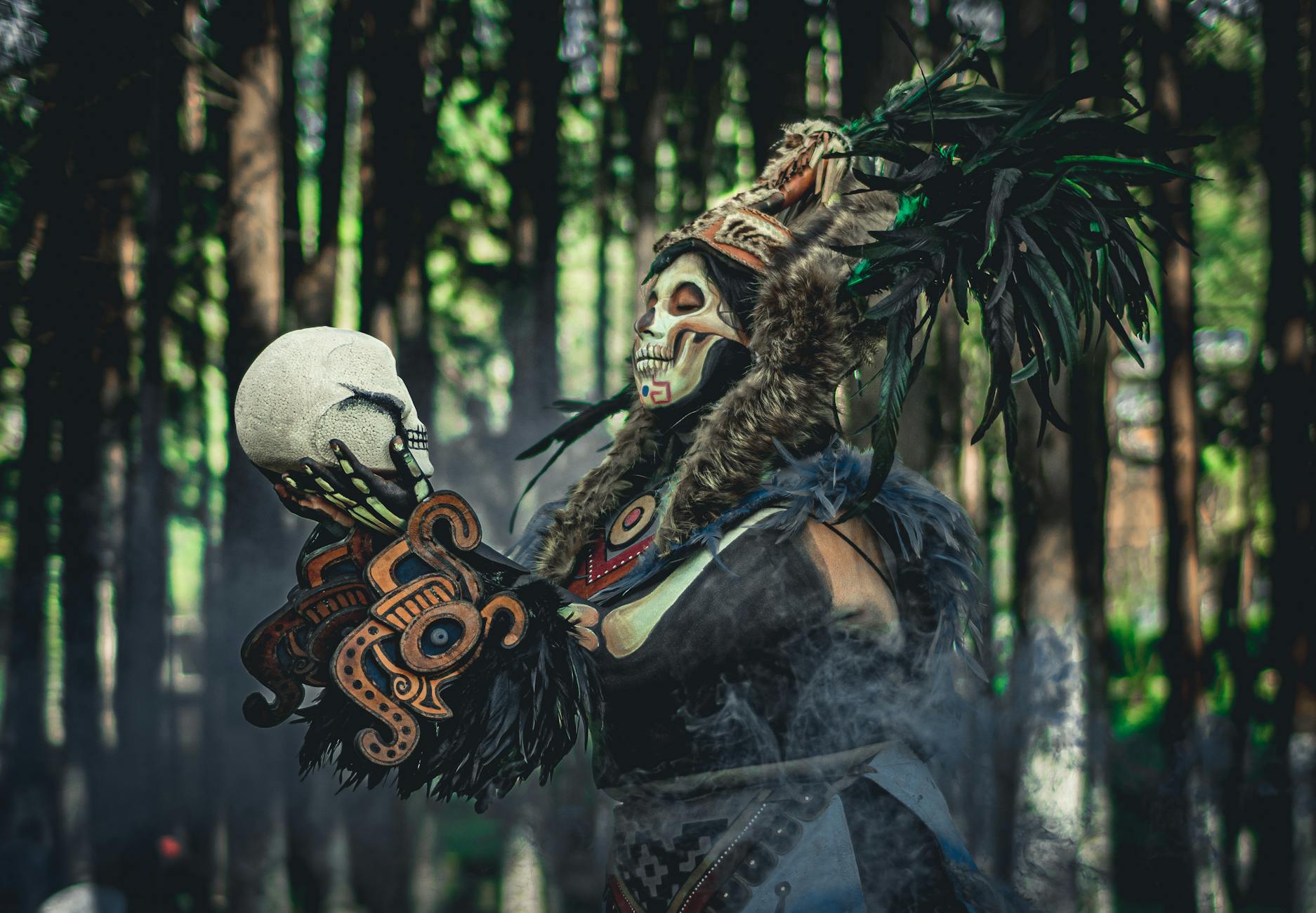My travels recently brought me to Mexico City, and I kept thinking, “Mexicans, like Buddhists, really get death and dying right.”
Mexican end-of-life rituals focus on celebrating a person’s life as a way to companion the grief felt over losing them. They consider death the beginning of a new journey, rather than an ending. They blend these traditions with ancient rites and modern practices.
Death is a Part of Life
Children in Mexico understand death and dying from an early age. Adults don’t shield them from grief or keep them away from funerals. As a result, Mexicans grow up with these rituals and feel more comfortable with death than people from some other cultures.
When a Mexican dies, tradition dictates that mourners spend time with the corpse before burial. No one rushes the body away to be buried. On the contrary, most bereaved loved ones spend up to 48 hours with their deceased relative. They often keep the body at home either in a simple coffin or on a bed with a cover sheet.
This is a sacred time for families. Mourners visit and hold prayer vigils. The family receives guests who bring with them condolences, food, or money. Everyone gets together to eat, drink, laugh, cry, and reminisce together.
Call It a Wake or Velorio
Keeping the corpse in plain view, as with most Catholic wakes, is the main component. They don’t close coffins. In fact, some families choose glass coffins or semi-opaque shrouds. This way, people can openly view the body but there is a physical barrier acting as a metaphor for the barrier between life and death.
Grief-stricken loved ones light candles and place them at each corner of the coffin. Afterward, they keep the candles for good luck. Velarios often last all evening and into the night, allowing family members to socialize with mourners and share their memories openly and freely with one another.
They display photos of the dead person as a tribute.
The family serves food at the wake, often in a separate room where they set up games, like dominoes. Visitors spend time with the body, praying and offering condolences, and then spend time eating and celebrating the person’s life with other loved ones.
The point of the wake isn’t to provide a morose and quiet space. Instead, it’s a loud and lively affair involving family and friends, no matter their age.

Mexican Funerals
After 48 hours, the wake ends, and a funeral takes place. Many Mexican funeral traditions are linked historically and culturally to Catholicism. This is why most Mexican funerals take place in a Catholic church. If the family is not Catholic, they hold the funeral in another house of worship or community space.
Mexican funerals tend to be large, with immediate and extended family in attendance. The larger community of friends and acquaintances is also invited and encouraged to attend.
Burial Customs
Dead people are usually buried with objects that mean something to them during their lives. Mexicans believe they will be used in the afterlife when the dead person begins a new life after the burial. So, the family places sentimental, favorite, or useful possessions inside the coffin alongside the dead body.
Family members who are physically able to walk will follow the coffin to the cemetery. When they’re lowering the coffin into the grave, close relatives may place a bit of earth on top.
Prayer is an essential part of a Mexican funeral. Depending on the specific cultural background of the family, most Mexican families spend nine days praying for their loved one’s safe journey to the afterlife. They call such prayers novenas.
Day of the Dead
Mourning doesn’t end with burial rituals, prayers, and novenas. The Day of the Dead, from October 31 through November 2 every year, is a fiesta held in honor of loved ones who have passed away.
Children build altars to encourage the spirits of dead children to come back and visit for the first night, known as All Hallows Eve. On the second day, All Saints Day, adult spirits are believed to join in on the festivities. People build additional altars for the third day, known as All Souls Day.
Large crowds of Mexicans visit cemeteries during this three-day holiday. They build memorials with decorations, and toys for children, along with gifts of tequila or food for adults. They wear decorative skull masks made of chocolate and offer them to deceased children who may be returning to earth for festivities.
Dead Does Not Mean Forgotten
Mexican funeral traditions acknowledge death’s permanence and create a space for people to grieve in natural and healthy ways. They also find great comfort in the idea of welcoming their dead loved ones back for visits. Velorios, funerals, novenas, and the Day of the Dead in Mexico all normalize death and dying to make this phase a sacred part of life without fear, anxiety, or avoidance.
For more information about these and other cultural death rituals, contact me at Anitya Doula Services today.



One thought on “Traveling Death Doula Series: Mexico”